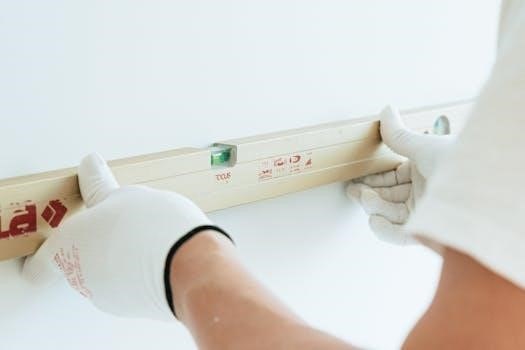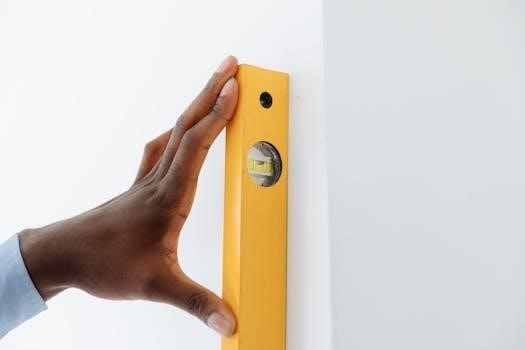Embark on a journey to master Engineering in Classic WoW with this comprehensive guide․ Discover the fastest and most efficient paths to level your skill from 1 to 300․ Learn the secrets of crafting gadgets, bombs, and more, all while minimizing costs․
Engineering in Classic WoW stands out as a unique and engaging profession, offering a blend of practical gadgets, explosive devices, and quirky contraptions․ Unlike some professions that primarily focus on crafting gear, Engineering provides tools and items that can be used across a variety of situations, making it particularly appealing for players who enjoy utility and problem-solving․
One of the defining features of Engineering is its ability to create items that offer tactical advantages in both PvE and PvP scenarios․ From bombs that can disrupt enemy formations to devices that grant temporary buffs, Engineers have a diverse toolkit at their disposal․ This makes the profession especially attractive to classes like Hunters, who can benefit from crafted guns and traps, and Rogues, who can use gadgets for stealth and subterfuge․
Furthermore, Engineering offers a unique flavor that sets it apart from other professions․ The profession is known for its unreliable and sometimes comical creations․ While some items may malfunction or have unexpected side effects, the potential rewards and sheer entertainment value make Engineering a worthwhile pursuit for many players․
Benefits of Engineering for Different Classes
Engineering provides distinct advantages to various classes in Classic WoW, enhancing their capabilities in both PvE and PvP environments․ Hunters, for instance, greatly benefit from Engineering’s ability to craft powerful guns, providing a reliable and often superior ranged weapon option․ Additionally, they gain access to traps and gadgets that can control the battlefield, offering tactical advantages during encounters․
Rogues find Engineering invaluable for its utility in stealth and subterfuge․ Gadgets like the Goblin Rocket Helmet offer mobility and surprise attacks, while bombs and devices can disorient opponents, creating opportunities for ambushes and escapes․ The ability to craft sappers and other explosives further enhances their damage potential in both single-target and AoE situations․
Warriors and Paladins, while not as directly benefiting from crafted weapons, can utilize Engineering to gain an edge in combat․ Items like grenades and bombs provide additional damage options, while gadgets can offer temporary buffs or disrupt enemy formations․ The utility and tactical advantage provided by Engineering can significantly enhance their survivability and effectiveness in both tanking and DPS roles․
Casters, such as Mages and Warlocks, find Engineering useful for its utility and mobility tools․ Items like reflectors can help mitigate incoming damage, while gadgets can provide temporary movement speed boosts or create distractions․ While they may not directly benefit from damage-dealing Engineering items, the utility and defensive options make it a worthwhile investment․
Engineering Trainers Locations
To begin your journey in Engineering, you’ll need to locate a trainer who can teach you the basics․ Fortunately, trainers are readily available in most major cities throughout Azeroth․ For Alliance players, Ironforge is a key hub․ Seek out Springspindle Fizzlegear, who resides within the city, ready to impart his knowledge of Engineering․ Another option is Lilliam Sparkspindle in Stormwind, located near the Trade District․
Horde players can find Engineering trainers in Orgrimmar and Undercity․ Roxxik in Orgrimmar is a prominent trainer, located in the Valley of Honor․ In Undercity, search for Geargrind Spannerwrench, who can guide you in the ways of Engineering․ These trainers will teach you the Apprentice skill level, allowing you to begin crafting basic items․
As you progress, you’ll need to find Expert and Artisan trainers to further your skills․ Roxxik and Springspindle Fizzlegear can train you up to Expert level․ For Artisan training, which allows you to reach the maximum skill of 300, you must seek out specific trainers located in more remote areas․ Buzzek Bracketswing can be found in Gadgetzan in Tanaris, while Goblin trainers require completing a short quest line, usually starting in Ratchet․ These trainers will provide the knowledge needed to master Engineering;
Required Materials Overview (1-300)
Leveling Engineering from 1 to 300 in Classic WoW requires a significant investment in materials․ Gathering these efficiently is crucial for minimizing costs and maximizing your leveling speed․ You’ll primarily need various types of stone and metal bars, so mining is a highly recommended complementary profession․
For the early levels (1-75), Rough Stone and Copper Bars are your staples․ You’ll need a substantial amount of Rough Stone initially, followed by Copper Bars for crafting simple devices․ As you advance (75-150), Coarse Stone, Linen Cloth, and Bronze Bars become essential․ Bronze Bars require combining Copper and Tin, so ensure you have a good supply of both․

The mid-levels (150-225) demand Iron Bars, Wool Cloth, and Steel Bars (made from Iron and Coal)․ Stockpiling Iron Ore is vital during this phase․ For the final stretch (225-300), Mithril Bars, Mageweave Cloth, and Thorium Bars are paramount․ Mining Mithril and Thorium will be your focus, and you might consider purchasing Mageweave Cloth from the Auction House to save time․ Remember to keep some materials like Solid Stone and Dense Stone as they are required for certain schematics․ Careful planning and resource management are key to efficiently leveling Engineering․
Leveling Guide⁚ Apprentice (1-75)
The Apprentice stage of Engineering (1-75) is the foundation for your crafting journey in Classic WoW․ Begin by visiting any Engineering trainer in major cities to learn the Apprentice skill․ The primary goal here is to efficiently use readily available materials to maximize skill gains․
Start by crafting Handfuls of Copper Bolts until you reach skill level 40․ This recipe requires only Copper Bars, making it extremely accessible․ Next, transition to crafting Rough Blasting Powder until you hit skill level 50․ This utilizes Rough Stone, which is abundant near starting areas․ Once you reach level 50, visit your trainer again to learn the Journeyman skill․
Continue crafting Copper Tubes from 50-65 skill․ This recipe will require you to use Copper Bars․ After that, craft Simple Pyrotechnic Devices until 75․ This requires Linen Cloth and Copper Bars․ This stage focuses on using cheap materials and crafting recipes that give skill points quickly․ Always check the Auction House for cheap materials to expedite the process and reduce costs․ Remember to save any extra materials, as they may be useful for later recipes․
Leveling Guide⁚ Journeyman (75-150)
Having mastered the basics, the Journeyman phase (75-150) requires a bit more investment and introduces more complex recipes․ Visit your Engineering trainer to learn Journeyman Engineering․ Begin by crafting Arclight Spanners up to skill level 90․ This recipe will require Bronze Bars․ Keep in mind that Bronze Bars require both Copper and Tin․
Next, craft Small Bronze Bombs until you hit skill level 100․ This recipe involves Bronze Bars and Coarse Stone․ After that, shift to crafting Clockwork Boxes until level 120, which will require Bronze Bars and Wool Cloth․ These will give reliable skill points;
From 120-145, craft Handfuls of Copper Bolts, these might be green but they are cheap․ You will need Copper Bars․ Finally, craft Rough Blasting Powder until 150․ This requires Coarse Stone․ The goal during the Journeyman phase is to balance cost-effectiveness with efficient skill gains․ Check auction house prices regularly and adjust crafting choices based on material availability and pricing․ Don’t hesitate to sell any excess crafted items to recoup some of your expenses․ Remember to visit your trainer at 150 to learn the next rank, Expert․
Leveling Guide⁚ Expert (150-225)
Welcome to the Expert Engineering phase (150-225), where schematics become more intricate, and the required materials demand further resourcefulness․ First, locate an Expert Engineering trainer․ For the Horde, seek out Roxxik in Orgrimmar; for the Alliance, find Springspindle Fizzlegear in Ironforge․
From 150 to 160, craft Silver Contact․ These will require Silver Bars․ After that, you can craft Heavy Blasting Powder from 160 to 175․ You will need Heavy Stone․ Next, craft Bronze Frameworks until 190․ This will require Medium Leather, Bronze Bar and Wool Cloth․
From 190 to 200, craft Explosive Sheep․ This will require Heavy Blasting Powder, Bronze Framework, Wool Cloth and a Fused Wiring․ These will require more materials, but they are still the best options․ Finally, from 200 to 225, craft Gyromatic Micro-Adjustors․ These will require Steel Bar․ Keep an eye on material prices and consider alternatives if costs become prohibitive․
Leveling Guide⁚ Artisan (225-300)
The Artisan Engineering phase (225-300) represents the final stretch to mastering the profession․ To begin, you’ll need to find an Artisan Engineering trainer․ Alliance players should head to Ironforge and speak with Tinker Humperdink, while Horde players can find Buzzek Bracketswing in Gadgetzan․

From 225 to 235, craft Mithril Tubes․ These require Mithril Bars․ Next, from 235 to 245, create Unstable Triggers․ These will require Mithril Bar and Mageweave Cloth․ After that, continue to craft Mithril Tubes to 250․ From 250 to 260, craft Hi-Explosive Bombs․ These will require Mithril Bar and Unstable Trigger․

From 260 to 285, craft Mithril Casings․ These require Mithril Bar․ And from 285-300, craft Dense Dynamite․ These require Mithril Casing and Dense Stone․ Keep a close watch on auction house prices for materials, and consider farming your own Mithril if necessary to minimize costs․
Specializations⁚ Gnomish vs․ Goblin Engineering
At skill level 200, Engineers can choose between two specializations⁚ Gnomish and Goblin Engineering․ This choice is permanent, so consider your options carefully! Gnomish Engineering focuses on creating quirky, often unreliable, but incredibly useful gadgets․ Think teleporters, mind control devices, and other inventive contraptions․
To become a Gnomish Engineer, speak with Tinkerwiz in Ironforge (Alliance) or Sovik in Orgrimmar (Horde)․ They will give you a quest to complete, typically involving crafting a specific item to prove your aptitude for Gnomish ingenuity․
Goblin Engineering, on the other hand, embraces chaos and destruction․ Goblin Engineers specialize in explosives, bombs, and other devices designed to inflict maximum damage․ To become a Goblin Engineer, seek out Nixx Sprocketspring in Gadgetzan․ Their quest will likely involve blowing something up, so be prepared for some mayhem! Both specializations offer unique schematics and advantages, catering to different playstyles and preferences․

